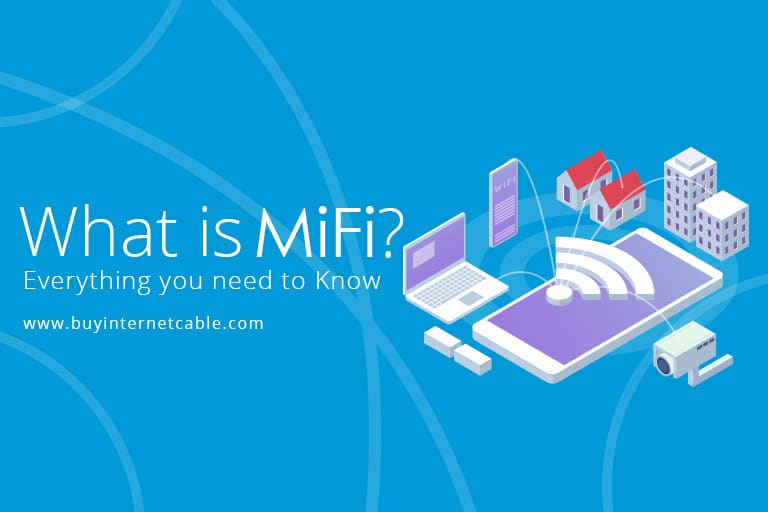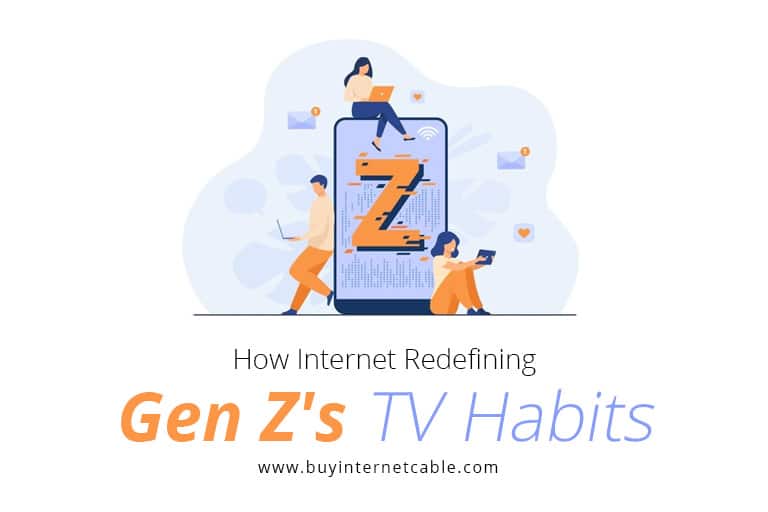Also known as a portable hotspot, a MiFi device is a very common device to find around you. If you don’t have one, you likely know someone who uses it from time to time. A lot of people keep MiFi devices as an emergency backup in case their internet service goes down. Even fiber optic internet can encounter issues from time to time, so it helps to have a MiFi device on hand. MiFi devices have proven to be especially useful in current times, with the pandemic forcing everyone indoors.
Often with multiple internet users in one household, everyone’s streaming, downloading, remote working, and distance learning can eat into your internet plan’s data limit. A MiFi device can help ensure you stay connected when you need it the most: when you don’t have access to a conventional Wi-Fi network. Here’s everything you need to know about Mi-Fi devices.
Table of Contents
What Is a Mi-Fi Device and What Does It Do?
Mi-Fi devices can be a portable router with a power bank integrated into the hardware for on the go use. Mi-Fi dongles also act as a portable router but need to be powered via a USB connection. In both cases, Mi-Fi devices are much smaller than the average phone, making them extremely portable and easy to store. Both devices offer localized, short-range Wi-Fi access in your immediate vicinity.
Just like your home Wi-Fi network, the Mi-Fi allows multiple users to connect to the same network. However, unlike most cable or home broadband services, Mi-Fi devices offer internet access via mobile broadband. This means you are more likely to get Mi-Fi service from a provider that also offers cellular services. The Mi-Fi device can also offer connectivity to other wireless devices in your home, such as wireless TV boxes.
The Advantages of Using Mi-Fi Devices
The biggest advantage that Mi-Fi devices offer to users is portable internet access. In other words, you can take your internet network with you wherever you go. Even in areas with weaker signal strength, such as remote parts of the country, you should still be able to access the internet. This is extremely useful when you’re traveling or if you find yourself without reliable internet access.
The second distinct advantage is that Mi-Fi is easier on your phone or tablet battery than using LTE services. Unlike your phone’s data mode, a Mi-Fi connection consumes the same amount of battery as a Wi-Fi connection. So you won’t have to deal with a drained battery after a few hours of use. If you have a portable Mi-Fi router, it may often have its own power storage integrated into the body. All you have to do is charge it before you head out.
The Disadvantages of Using Mi-Fi Devices
The single biggest disadvantage of a Mi-Fi device is that it is maybe too convenient. It is easy to forget that the device is not a residential Wi-Fi connection but actually uses mobile data. With mobile data being limited in many cases, it is easy to consume your quota and run into expensive overages. Unless you’re careful, you may find yourself spending more and more on data.
At the same time, a Mi-Fi device cannot support as many connections as your average Wi-Fi router. In fact, if you have multiple users, you’ll see decreased speeds and slower connection times. This is because the Mi-Fi device lacks the bandwidth management and channel switching ability of modern routers. Too many users will simply clog up the bandwidth and degrade the experience for all connected devices.
Should You Use a Mi-Fi Device or a Dongle?
We’ve mentioned that Mi-Fi can come as a standalone device or as a dongle. But which one should you use? The answer depends on the specifics of what you need from your Mi-Fi. A dongle needs to be connected to the device you are accessing the internet on. This is great if you’re working on a laptop or a personal computer. But it may be problematic when you want to connect a phone or a tablet.
A portable Mi-Fi device, however, does not require plugging into the connected device. It offers a wireless network just like the one you use at home. With this, you can connect more than USB-supported devices. Phones, tablets, and smartwatches should be able to access the Mi-Fi network with the right credentials.
A portable device is generally more convenient than a dongle. With no need for a constant power source or being physically connected to a device, you’re free to access the internet on any suitable wireless device.
Wi-Fi and Mi-Fi, however, are not the only forms of wireless connectivity. Li-Fi uses light to transmit information instead of signals. It can use the visible Cox of light as well as UV and IR. The tech has been around since 2011 but has not caught on in the mainstream as of yet. For now, Wi-Fi, Mi-Fi, and cellular data are your best bets for on-the-go internet.
FAQs
- What is the difference between MiFi and hotspot?
The Mi-Fi device acts as a portable router, while a hotspot uses your phone data. - What is the best MiFi to buy?
A portable Mi-Fi device is a better option since you can connect multiple devices.



